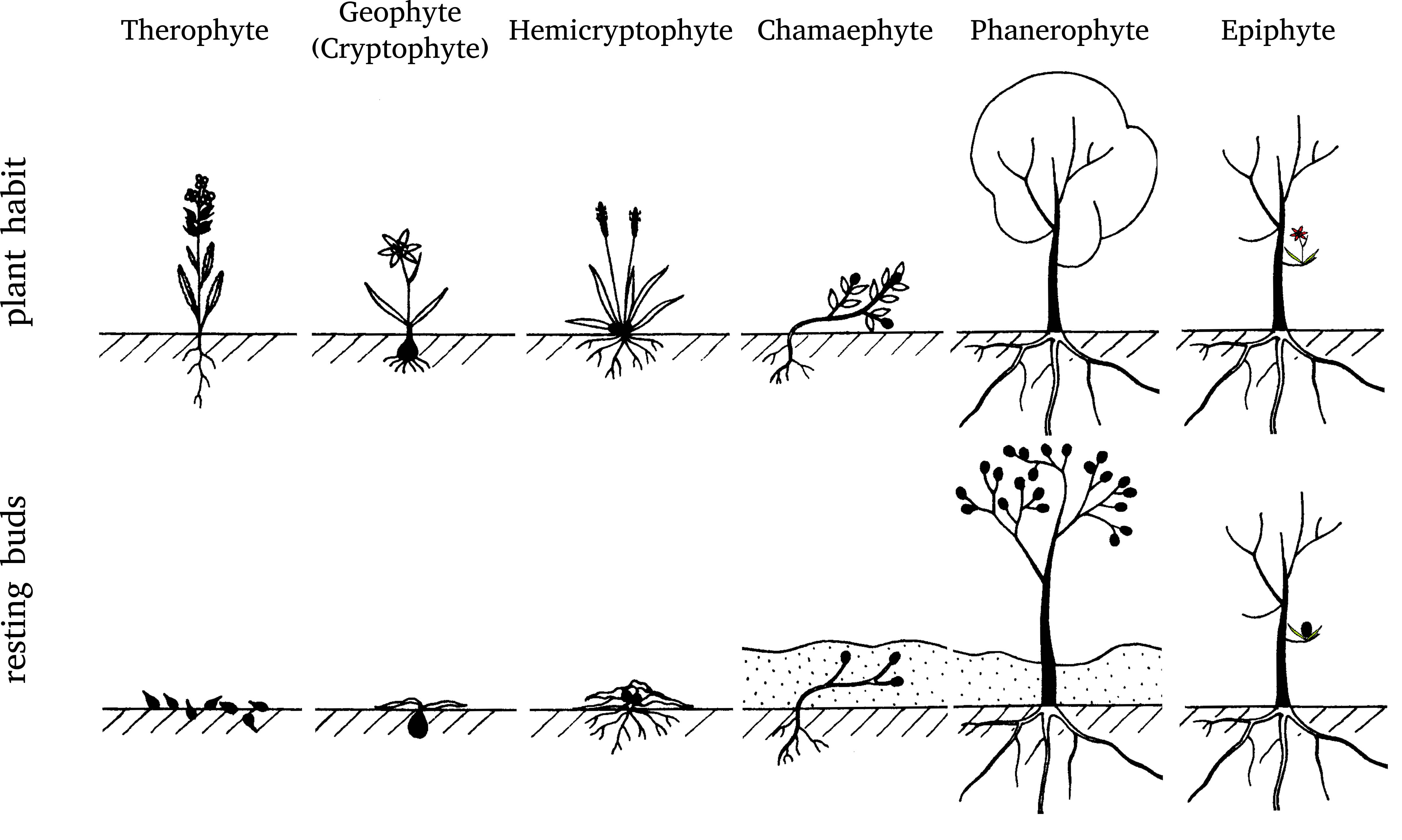Plants can be divided into several life forms according to the position of resting buds that allow them to survive unfavorable environmental conditions (winter, dry season, etc.).

Therophytes (annuals) — annual plants which complete their life-cycle rapidly under favorable conditions and survive the unfavorable cold or dry season in the form of seed.
Cryptophytes — perennial plants with resting buds lying either beneath the surface of the ground as a rhizome, bulb, corm, etc., or a resting bud submerged under water or in marsh. Specifically, Geophytes (resting buds under the soil surface) are one of the most prominent plant life-forms within the GCFR.
Hemicryptophytes — perennial plants with resting buds at or near the soil surface. Typically plants with ground rosettes or grasses.
Chamaephytes — perennial plants with resting buds on persistent shoots near the ground – usually woody plants (shrublets) with buds borne close to the ground, no more than 25 cm above the soil surface.
Phanerophytes — woody perennials with resting buds more than 25 cm above soil level, e.g. trees or shrubs.
Epiphytes — plants unconnected to ground thus with resting bud position irrelevant; usually growing on phanerophytes.
